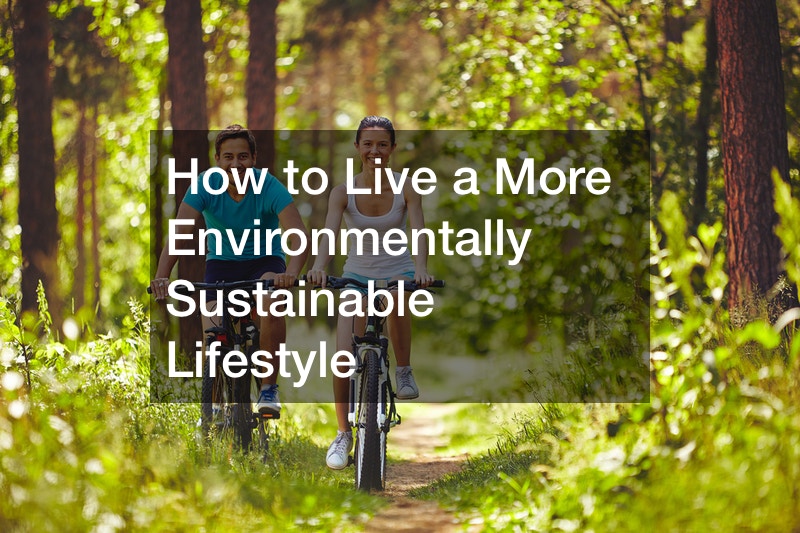
Did you know that one-fifth of direct emissions nationwide can be traced back to individual households? Unfortunately, it gets worse. When it comes to indirect emissions, that number climbs as high as 80%, PBS reveals. The food you eat, the clothing you wear, and the appliances and water you use inside your home make a tremendous impact.
Now, with more people working from home than ever before, that impact is likely to be even higher than in the past. Keep your carbon footprint low while working from home by taking some proactive steps. The Silicon Republic recommends swapping out your light bulbs for LED ones (LED bulbs reduce energy use by 40%), taking full advantage of natural light during daylight hours, using electronic programs or mobile apps for to-do lists and taking notes, and sprucing up your at-home office with plenty of lush, green plants that will help purify the air around you. If you want to make an immediate change, adjust “your computer settings so that it automatically goes into hibernation or sleep mode when you’re not active on it. Remove your screensaver,” The Silicon Republic continues.
Doing whatever you can to ensure your home office is as green and energy-efficient as possible is a great start. Do not stop there. Learn how to live a more environmentally sustainable lifestyle. To do that, begin with your household and purchasing habits. Use these six tips to radically change the ways you use energy and resources at home.
Why Is an Environmentally Sustainable Lifestyle Important?

When it comes to the environment, the easy way out is to assume there is very little that one person — or one household — can do. It is tempting to pass that burden onto large corporations, the government, and organizations. They have money. They have more resources at their disposal than the average person. Even so, it is the average person and the average household who contribute a great deal to direct and indirect emissions, and if everyone were to adopt the attitude that it is not their problem, we would be in a very troubling spot indeed.
A much better way to look at things is from the standpoint that individual choices and actions do matter, and that means you can make a massive difference when you learn how to live a more environmentally sustainable lifestyle. Be being extra mindful of your actions at home so you and others can prosper in the following ways.
First, preserve nature. Trees continue to be cut down. Rainforests continue to disappear. Our planet only has so much clean water, and we cannot afford to pollute it. If things continue down this track, nature as we know it won’t exist in the same way in generations to come. If individuals commit to doing their part, it is truly remarkable how much we accomplish and how much we stand to save. The stakes are very high.
Secondly, help others live longer, healthier lives. The environment isn’t just about trees and forests, it’s about us, too. Pollution poisons the water we drink, the air we breathe, and the food we eat — and not without significant consequences. Pollution is one of the leading causes of several different types of cancer. By dramatically reducing emissions or eliminating pollution whenever and wherever possible, all of us stand to live longer, healthier lives.
Finally, protect animals. Unless we take proactive steps to save the environment, animals’ homes will continue to be destroyed. Animals rely on forests, tundra, bodies of water, and other biomes to live healthy lives. Without them, many of these species are at risk. Likewise, pollution does not merely pollute the air we breathe and the water we drink. Animals eat and drink from those same sources and ingesting polluted air and water puts them at risk, too.
Your decision should not be if you wish to live an environmentally sustainable lifestyle but rather how to live a more environmentally sustainable lifestyle. The futures of our planet, human health, and animals’ survival lie on our shoulders. Reevaluate your decisions at home — and before bringing new stuff into your home — to do something about it.
1. Repair Your Home

Too often, homeowners lose energy and spend too much money because they fail to prioritize home maintenance. Letting certain things go around the house doesn’t just leave it looking and feeling drab, it also wastes energy and drives up your utility, heating and cooling, and water bills. Energy.gov reveals that air leaks — typically originating from drafty doors and windows — increase household energy bills by as much as 20%. To make sure that the energy you are using stays inside your home and that it is put to good use, follow this maintenance checklist.
First, inspect and repair your roof. Ideally, it is best to have your roof inspected twice a year, once in fall and once in spring. A roofing company will send out an inspector who will check your roof for worn shingles, shingles with missing granules, animal nests, water damage, and any gaps between your rooftop and the flashing near chimneys, stovepipes, or ductwork. If there are any glaring issues, he or she will recommend the next steps you should take to fix them. You may not think of repairing your roof when you consider how to live a more environmentally sustainable lifestyle, but that would be a mistake. By repairing gaps in between your roof and flashing, for example, you can save a tremendous amount of energy while significantly cutting down your heating and cooling costs.
Then, seal up air leaks. When it comes to air leaks, it is better to think of them as energy that is escaping right out the window. Use weatherstripping, caulk, foam insulating strips, insulated curtains, or window film to plug up air leaks. Without air leaking out through cracks and under doorframes, you will save a considerable amount of your heating and cooling costs. More energy will stay inside your home, and your heating, ventilation, and air conditioning (HVAC) system will run as efficiently as possible.
Finally, take another look at your plumbing. You may not think anything of a slow-draining toilet or minor leaks around your home, like a faucet that drips from time to time. However, even these little things add up, and they can waste gallons and gallons of water, and that means you and your household will leave a much larger carbon footprint. Do your part by contacting a plumber and addressing these issues around your home.
2. Support Small Businesses

Generally speaking, a small business has a much smaller carbon footprint than large corporations. Why? If you think about it, the answer is obvious. The furniture you purchase from your local furniture store is likely homemade or manufactured in a small warehouse. The furniture you will find in big-box retailers, however, is mass-produced. That means it is produced on a large scale with as few expenses as possible. Often, producing these large numbers while keeping costs as low as possible means that corporations take shortcuts elsewhere — namely in packaging, quality, and environmental sustainability.
Are you trying to learn how to live a more environmentally sustainable lifestyle? Next time you want that custom birthday tee shirt, support a small business instead of lining the pockets of overlarge corporations.
3. Purchase From Environmentally Conscious Brands

When fully exploring how to live a more environmentally sustainable lifestyle, do not stop there. In addition to supporting small businesses, choose brands that commit to being environmentally conscious as well.
For example, when you are purchasing clothes or linens, there are plenty of brands that commit to manufacturing environmentally friendly options and organic items. Further, most of these brands also take steps to limit excess packaging as much as possible. When they ship items to you or pack them up for you to take home, they use as little packaging as possible and favor recycled and/or biodegradable packages.
Best of all, buying organic clothes and linens isn’t just good for the environment — it’s good for you, too. For example, purchasing organic baby bedding sets benefits your child. When you purchase environmentally conscious or organic baby sheets, you know that the manufacturer did not use harsh chemicals that may irritate your baby’s skin or otherwise harm them.
Similarly, choosing soaps, body creams, lotions, or a revitalizing treatment that is environmentally friendly means that it does not contain caustic chemicals. Chances are it will be considerably gentler on your skin, and you will avoid long-term exposure to unnecessary — and sometimes dangerous — ingredients.
4. Start a Vegetable Garden

Another important step when learning how to live a more environmentally sustainable lifestyle is to start a vegetable garden. Too often, we rely on produce from the grocery store. That produce may be the product of unsustainable farming, harmful pesticides, and irresponsible shipping practices. To avoid these pitfalls, it is much better to grow your own.
Growing your own vegetables allows you to know exactly what’s in them. Choose to keep pests out of your garden naturally, and avoid the dangerous pesticides so often used in commercial farming. Growing your own vegetables at home completely cuts out the need for packaging and transportation, making it markedly more environmentally friendly.
Continue doing your part and exercising your green thumb by planting trees in your backyard. Trees help purify the air and produce more oxygen.
5. Meal Prep to Avoid Food Waste

You can make big changes around the kitchen to make your home more environmentally sustainable. Replacing an old, leaky sink and switching to low-flow taps can help considerably, but there are also steps you can take on your own — in between working with kitchen remodeling services. One of the simplest steps you can take is to cut down on food waste by meal prepping.
Food waste accounts for a large part of households’ carbon footprint. In fact, according to the U.S. Department of Agriculture (USDA), 40% of our food nationwide ends up in a landfill.
To personally do something about it, start with a quick inventory of your kitchen or pantry. Too often, we are guilty of double- or even triple-purchasing things, and these things end up wasted. More often than not, this can be chalked up to a lack of planning. We’re not certain whether we have a particular item or ingredient at home, so we buy it. After making your shopping list, go through your kitchen and pantry and cross off any items you may already have.
Next, plan accordingly. Meal preparation is all about thinking ahead. Consider how you can use some staples or common ingredients across multiple recipes. If you can use rice, beans, or chicken for several recipes over the course of any given week, you are much less likely to end up throwing them out or wasting these ingredients.
Finally, save leftovers. If you will not be using all the items you purchase for meal prep, is there a way to save them? If you end up with too much fruit to reasonably eat as snacks or a side with lunch, consider other ways to use them. For example, if you start your mornings with oatmeal and honey, slice up some of that fruit for your oatmeal or slice fruit and freeze it to make smoothies.
For pointers on how to live a more environmentally sustainable lifestyle, meal prep. Meal prep and think carefully about the food that goes into it and how you can use as much of that food as possible.
6. Reconsider Your Trash and Recycling Habits
Finally, as you endeavor to learn how to live a more environmentally sustainable lifestyle, start with the obvious: reduce and recycle. Whenever possible, reduce the waste that will go out for trash collection and recycle responsibly. When recycling curbside, include only items listed on your county-issued recycling bin. To recycle larger items, like furniture recycling, research local donation sites and non-profits collecting these items to sell or reuse.
It is more than possible to change your habits and learn how to live a more environmentally sustainable lifestyle. Remember that the decisions you make in your home matter. Consider your environmental impact before you act.



